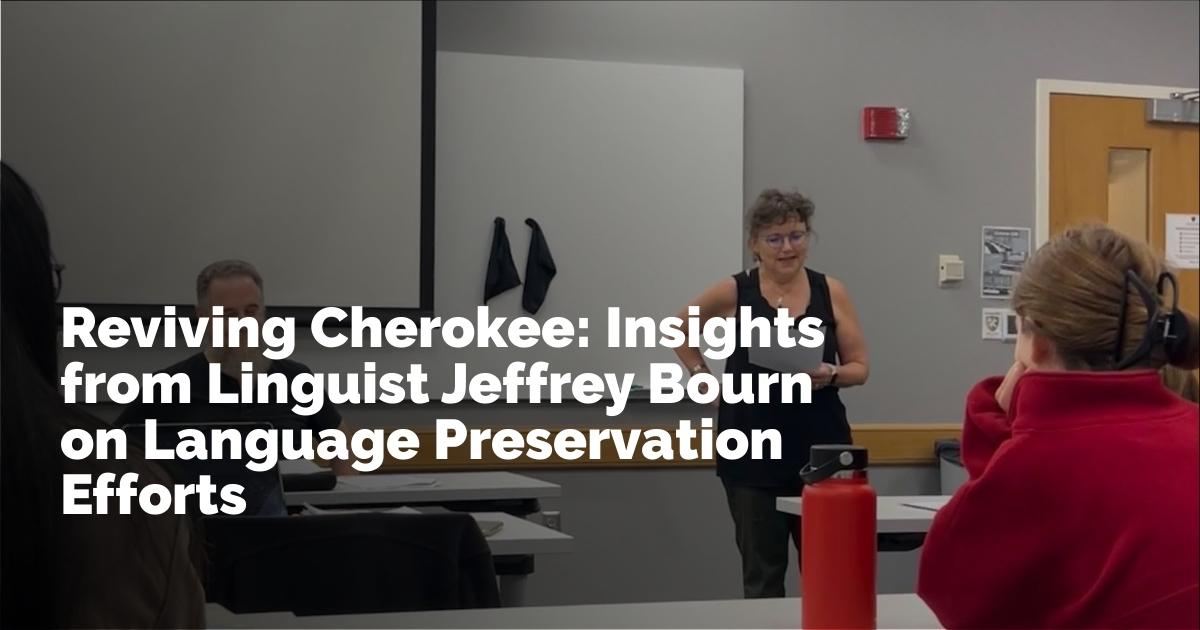Linguist Jeffrey Bourns and the Revival of the Cherokee Language
The Cherokee language, a native language of western North Carolina, is in danger of extinction, with only about 2,000 first-language speakers remaining today. This decline results from various factors, including governmental pressure to adopt English for economic advantages. Amidst this dire situation, Dr. Jeffrey Bourns, an affiliate research scientist in linguistics at Northeastern University, is making significant contributions to the efforts to preserve the Cherokee language.
Bourns' Linguistic Journey from Ancient Languages to Cherokee
Dr. Bourns initially focused on the writing systems of ancient Indo-European languages, earning his PhD from Harvard University. However, his path took a different direction when he became a project linguist for the Digital Archive of Indigenous Language Persistence (DAILP). Through this project, he discovered a profound interest in the Cherokee language, shifting his research focus to support the revival and preservation of this endangered language. As Bourns himself expressed, "I found what interested me and spoke to my training and followed it."
Examining Cherokee Grammatical Developments
On October 8, 2024, Dr. Bourns presented his research on the linguistic history of the Cherokee language, particularly its syllabary, to a captivated audience of professors and students. His interactive presentation delved into tracing the origins of adjectives in Cherokee. By examining the use of super high accents, Bourns explained how these elements alter meanings and contribute to the formation and development of the language over time.
One of the earliest records of the Cherokee language, the Cherokee Spelling Book published in 1819, served as a pivotal resource for Bourns’ research. This historical context is vital, as Bourns noted, "That book is especially precious since it predates the syllabary by a few years. It’s important to show respect for the original texts and not just to look at the secondary findings of other linguists."
Understanding Cherokee's Unique Linguistic Structure
Cherokee is distinct from English in several ways. A single Cherokee word can encapsulate an entire English sentence, and the language incorporates changing tones within words—similar to languages like Mandarin but foreign to English speakers. These features are intuitive to Cherokee speakers, highlighting the unique nature of the language. As Bourns explained, "The syllabary is meant for Cherokee speakers. It is a skeleton of the word, and speakers can flesh out the intonations and accents."
The Influence of English on Cherokee
In his exploration of the Cherokee language, Dr. Bourns touched upon a fascinating hypothesis: the influence of English on the development of Cherokee adjectives. Adjectives are absent from ancestral languages or other Iroquoian languages, indicating a possible linguistic evolution as Cherokee speakers interacted with English speakers. This interaction may have led to the unique incorporation of adjectives into Cherokee, marking a departure from its Iroquoian roots.
Cherokee Language Revitalization Efforts
Dr. Bourns' research supports broader revitalization efforts within Cherokee communities. In North Carolina, these communities actively develop learning materials for immersion schools to ensure young generations learn to speak, read, and write in Cherokee. By recording and sharing linguistic knowledge, Bourns contributes to preserving Cherokee language and culture, enabling it to thrive among future generations.
Education and Preservation for the Future
The preservation of the Cherokee language is a community-driven effort. With initiatives like immersion schools and linguistic research, the Cherokee language can find new life among younger generations. Dr. Bourns' work not only aids this revitalization but also bridges the gap between scholars, linguists, and the Cherokee community. His commitment to preserving a dying language ensures that the rich cultural heritage embedded in the Cherokee language remains accessible and vibrant for years to come.
출처 : Original Source

